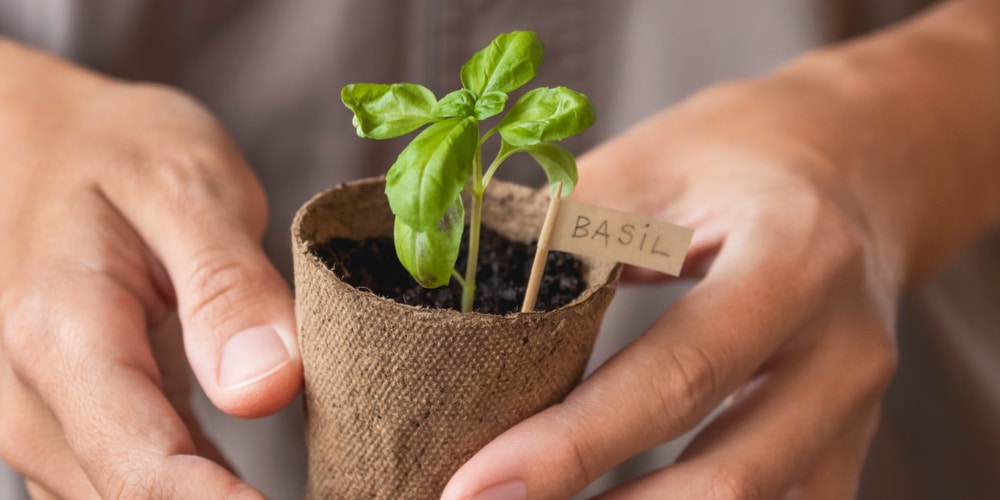Colorado is a beautiful state with ample opportunity for outdoor recreation. As an added bonus, Colorado is also home to a variety of plants and herbs that can be used for culinary or medicinal purposes. In this blog post, we will explore the five best herbs to grow in Colorado.
We’ll look at herbs that are native to or grow well in Colorado. We’ll discuss the benefits of each herb, how to grow it, and some of the common challenges you might face.
Best herbs to grow in colorado
While it’s true that Colorado’s climates are varied, and some herbs will do better in certain areas than others, there are still a variety of herbs that can be grown relatively easily in the state. The following are the best herbs to grow in Colorado:
Rosemary

Rosemary is a fragrant herb that is native to the Mediterranean. This evergreen shrub can grow up to six feet tall and produces small, blue flowers. Rosemary requires full sun and well-drained soil. It is relatively drought-tolerant but benefits from occasional watering during extended periods of dry weather. e
The leaves of the rosemary shrub are needle-like and fragrant. The flowers are small and blue, and they bloom throughout the year.
In Colorado, rosemary can be planted in the spring or fall. It is best to start with a young plant from a nursery rather than attempting to grow rosemary from seed, especially if you are new to gardening.
Once established, rosemary is relatively low-maintenance and only needs to be pruned occasionally to control its size and shape. You’ll find that this herb grows best in the western and southern parts of Colorado.
Its needle-like leaves are used to flavor a variety of dishes, including roasted meats, vegetables, and soups. Rosemary can also be used to make tea. This herb is high in antioxidants and has anti-inflammatory properties.
Lavender
Colorado is home to many beautiful flowers, but lavender is one of the most popular. Lavender is a member of the mint family and is known for its beautiful purple flowers and calming scent. The plant grows best in well-drained soil and full sun, and Colorado’s climate is perfect for growing lavender.
Although the plant is native to the Mediterranean, it has been cultivated worldwide for centuries. Today, Colorado is home to several lavender farms, where the plants are harvested for their essential oils.
In addition to being used in beauty products and aromatherapy, lavender oil is also used in some foods and medicines.
Lavender flowers grow in clusters and can be used to make dried arrangements. The flowers can also be added to sugar or used to make lavender-infused honey. Its leaves are shaped like spears and have a mild, grassy flavor.
Unfortunately, lavender is susceptible to a few different diseases, including powdery mildew and root rot.
These diseases are more common in humid climates, so it’s important to plant lavender in well-drained soil. You can also take steps to prevent these diseases by watering the plants early in the day and avoiding overhead watering.
Basil
Every kitchen needs a good supply of basil, and this fragrant herb is one of the easiest to grow. Basil thrives in warm weather and requires at least six hours of sunlight each day. The plant does best in rich, well-drained soil that is kept moist but not soggy.
Basil is best planted in the spring after the last frost has passed. The plant can be started from seed, but it is also easy to find young plants at nurseries and garden centers.
One of the common problems with basil is that it is susceptible to fungal diseases, so be sure to water from below and avoid getting the leaves wet.
Thyme

You may have noticed by now that most of the herbs on this list prefer full sun and well-drained soil. Thyme is no exception. This herb is native to the Mediterranean and prefers a warm, dry climate. When grown in Colorado, thyme should be planted in the spring or fall.
Thyme has small, needle-like leaves that are fragrant when crushed. The leaves are green and gray, and the plant produces small, pink flowers. Grown as perennials, thyme plants can live for several years with proper care.
Diseases are not common in thyme, but the plant can be affected by root rot if it is grown in poorly drained soil. To prevent this, make sure to plant thyme in a pot with drainage holes or a raised bed.
Oregano
Oregano is considered one of the hardiest herbs and can grow in a variety of climates. This plant is native to Europe and Asia and has been used for centuries in cooking and medicine.
Oregano prefers full sun but will also grow in partial shade. It does best in well-drained, sandy soil that’s kept moist but not soggy. Ideally, oregano should be planted in the spring or fall.
While oregano is popular for its use in cooking, the plant is also known for its medicinal properties. Oregano oil has been shown to have antibacterial and antifungal properties.
The plant is also a good source of antioxidants. With textured leaves and a pungent flavor, oregano is a versatile herb that can be used in many different dishes.
Best herbs to grow in Colorado: Final Thoughts
Colorado is a great place to grow herbs. The state’s climate and soils are perfect for many different types of plants, including the ones listed above.
Remember, no matter the herb you choose to grow, these plants need full sun and well-drained soil. With a little care, you can have a thriving herb garden in no time.
Related Article: What Herbs Can Be Planted Together?


